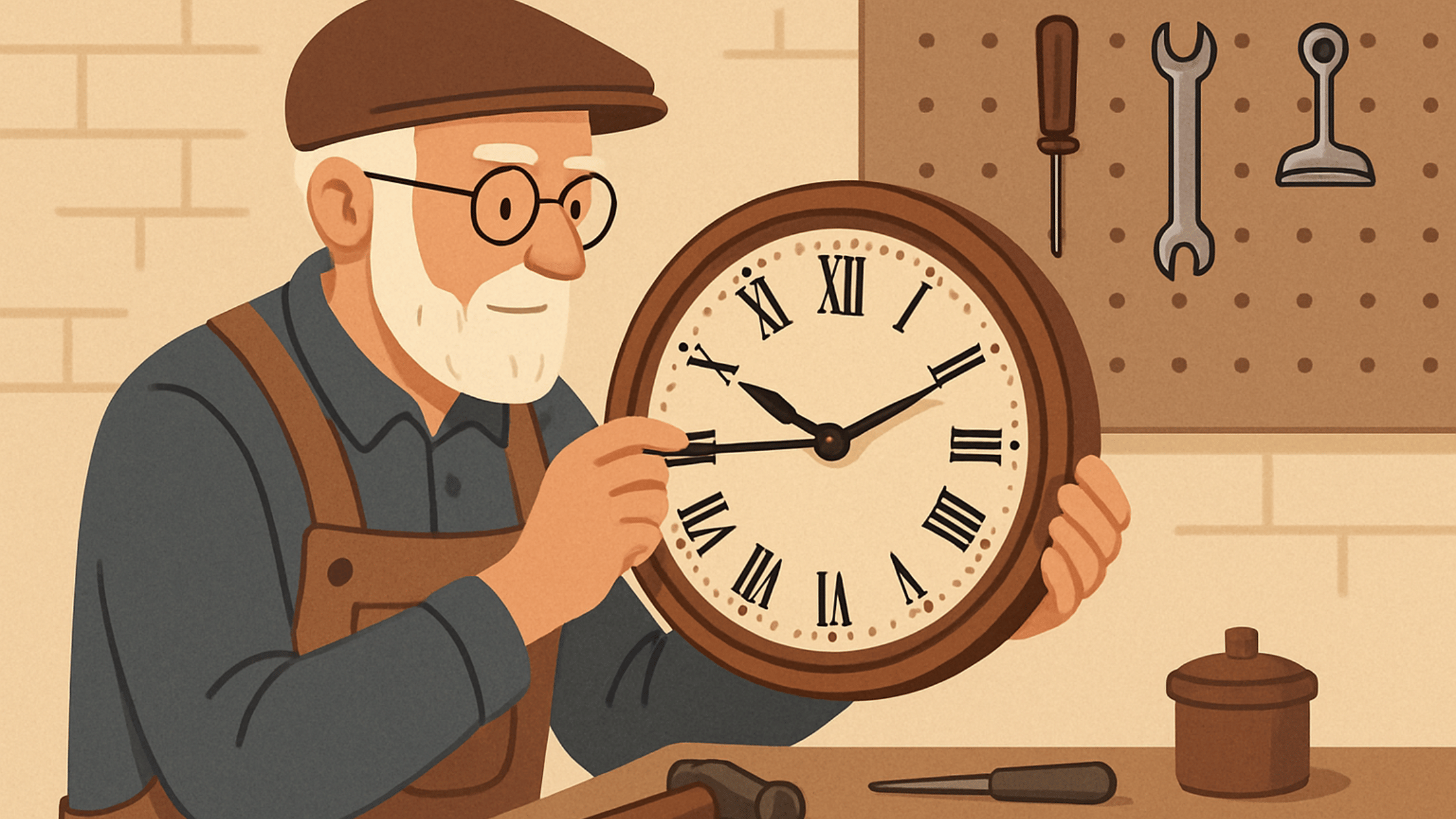Ever wondered who came up with the idea of hanging time on a wall? The invention of the traditional wall clock wasn’t an overnight discovery — it’s a story woven through centuries of brilliant minds and ticking evolution. Let’s dive into the fascinating journey of how the wall clock became a household staple.
This blog will explore the invention and evolution of the traditional wall clock. We’ll dig into its origins, the key inventors and innovations, and how the design evolved over time. The post is SEO-optimized for the keyword “who invented the traditional wall clock”, written in a casual, informative tone with historical context, fun facts, and lots of value for curious readers and history buffs alike.
A Brief Overview of Timekeeping Before Wall Clocks
Before the familiar ticking of a wall-mounted clock filled our homes and workplaces, ancient civilizations had their own creative ways to keep track of time.
- Sundials were among the earliest methods, used by Egyptians as far back as 1500 BCE.
- Water clocks (clepsydras) came next, used in Babylon, Greece, and China to measure time through the regulated flow of water.
- Candle clocks and incense clocks emerged in Asia as additional methods of estimating time.
However, these early inventions weren’t suitable for hanging on a wall. So when did that concept take shape?
The Birth of Mechanical Clocks: A Turning Point
The mechanical clock was the game-changer. Developed during the 13th and 14th centuries in Europe, it laid the foundation for the wall clock we know today.

Who Built the First Mechanical Clock?
While there’s no single inventor, Richard of Wallingford, an English monk and mathematician, designed one of the earliest known mechanical clocks around 1326. Around the same time, Giovanni de Dondi, an Italian physician and astronomer, also created an elaborate astronomical clock.
These early mechanical clocks were large and often built into church towers—not exactly something you’d mount on your kitchen wall. Still, they introduced essential features like gears, escapements, and weights that would evolve over time into smaller, more practical designs.
The Evolution to Wall-Mounted Clocks
The concept of the traditional wall clock didn’t emerge until the 17th century, when advancements in clockmaking allowed for smaller, more accurate, and decorative timepieces.

The Dutch Influence
The Netherlands played a significant role in popularizing the wall clock. In the 1600s, Dutch clockmakers began creating what we might now recognize as traditional wall clocks—pendulum-driven, weight-powered, and ornate in design.
- Christiaan Huygens, a Dutch scientist, is credited with inventing the pendulum clock in 1656, vastly improving accuracy.
- These pendulum clocks were often encased in wooden frames and mounted on walls, becoming centerpieces in European homes.
This era marked the true birth of the traditional wall clock—functional, beautiful, and suitable for domestic spaces.
The Industrial Revolution: Making Time for the Masses
Fast forward to the 18th and 19th centuries, and we see mass production of wall clocks thanks to the Industrial Revolution. Factories in the United States and Europe began producing clocks at scale, making them more affordable and accessible.
Notable Names in Wall Clock Manufacturing
-
Eli Terry, an American clockmaker, pioneered mass production techniques in the early 1800s.
-
Seth Thomas, whose company (founded in 1813) became one of the most recognizable names in traditional wall clocks.
-
Gustav Becker, a German clockmaker, produced high-quality wall clocks that are now collector’s items.
This era solidified the wall clock as a permanent fixture in homes, offices, schools, and public buildings.
What Defines a "Traditional" Wall Clock?
When we refer to a "traditional wall clock," we're typically talking about:
-
Analog design with hour and minute hands
-
Pendulum mechanism (especially in earlier models)
-
Wooden or metal casing
-
Mechanical or quartz movement
These features distinguish it from modern digital clocks and smart displays. Even today, many people prefer traditional wall clocks for their aesthetic charm and timeless elegance.
Did One Person Invent the Traditional Wall Clock?
In short, no single person invented the traditional wall clock. Instead, it was the result of:
-
Innovations in mechanical engineering (13th–17th centuries)
-
Breakthroughs in accuracy, like Huygens’ pendulum
-
Advances in manufacturing during the Industrial Revolution
So while there’s no one inventor to credit, it's safe to say that Christiaan Huygens, Richard of Wallingford, and Eli Terry all played major roles in the wall clock's story.
Fun Facts About Wall Clocks
-
The oldest working mechanical clock is in Salisbury Cathedral, dating back to 1386.
-
Many antique wall clocks still run without electricity, powered only by weights and pendulums.
-
Traditional wall clocks are often used in feng shui to influence energy and harmony in homes.
FAQs
When was the first wall clock made?
The first recognizable wall clocks appeared in the 17th century, following the invention of the pendulum clock.
Who invented the pendulum clock?
Christiaan Huygens, a Dutch scientist, invented the pendulum clock in 1656.
Are traditional wall clocks still in use today?
Absolutely. Despite digital alternatives, traditional wall clocks remain popular for their design and reliability.
What materials are used in traditional wall clocks?
Wood, brass, glass, and sometimes porcelain or enamel are commonly used.
Wrapping It Up
The traditional wall clock didn’t spring from a single inventor’s mind overnight. Instead, it’s a product of centuries of creativity, science, and craftsmanship. From ancient sundials to pendulum-driven beauties, the wall clock represents humanity’s ongoing fascination with time and our desire to keep it close—right there on the wall, ticking steadily forward.
Whether you’re a history buff, a clock enthusiast, or just curious, understanding who invented the traditional wall clock gives you a deeper appreciation for that elegant timepiece hanging in your living room.










